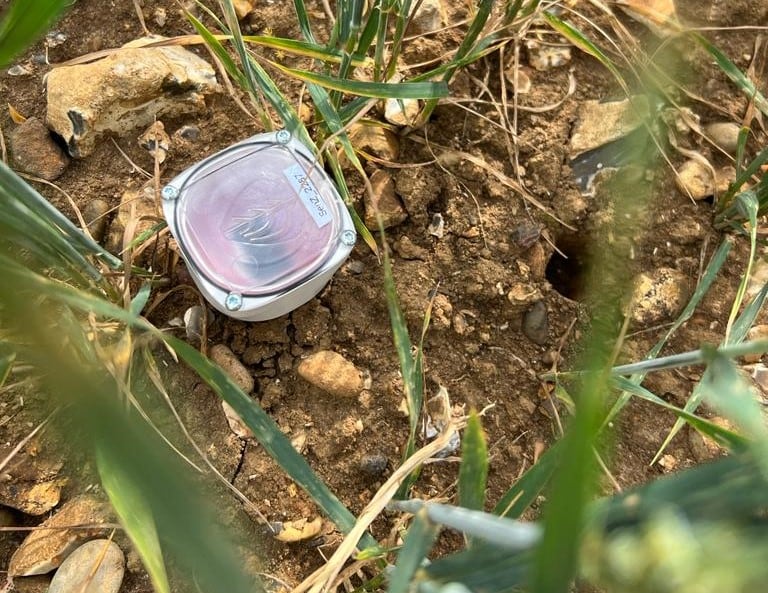Global crop protection company and Syngenta Group member Adama is in buoyant mood after receiving recognition by the Fungicide Resistance Action Committee (FRAC) for a new mode of action in cereals for one of its novel active ingredients, Gilboa.
Gilboa introduces a completely new mode of action for cereal fungicides, targeting nucleic acid metabolism – a biochemical pathway never previously utilised in cereal crop protection.
It offers robust protection against major cereal and oilseed rape diseases – including septoria, ramularia, and sclerotinia – which are critical threats to European and UK arable crops and provides a much-needed alternative to the limited range of existing fungicide chemistries (such as SDHIs, azoles, and strobilurins), which are increasingly compromised by resistance.
Chemicals vs biological inputs
In the agtech world, however, we also see growing demand for sustainable crop protection solutions with reduced environmental impact.
How is the company balance the development of innovative chemical products with increasing interest in biologicals and integrated pest management, aligning with regulatory and market expectations for sustainability?
“We start with growers,” responded Alex Mills, head of global fungicides at Adama. “Their evolving needs and realities in the field guide everything we do. Today, Integrated Pest Management (IPM) is no longer optional; it’s a strategic necessity, and that’s where we focus first. A large part of Adama’s portfolio already supports IPM, and we’re actively enhancing it through advanced formulation technologies guided by principles to reduce environmental impact, increase performance, and simplify use – all while maintaining strong efficacy.
“While we are also bringing new actives like Gilboa to market, these are more limited in scope and not the core of our innovation strategy. Our primary focus is on getting more from less – recognising there is always room for improving delivery, persistence, and efficiency of proven chemistries to support more sustainable use patterns.
“We invest around $200 million annually in R&D, with a meaningful share directed to innovations aligned with these guiding principles. These enhancements deliver the active ingredient’s in advanced and effective ways – resulting in a strong ROI for farmers and a lighter footprint on the environment.”
The company doesn’t view this as a choice between chemical and biological, he stressed. “It’s about smart, integrated solutions. Biologicals are playing a growing role, but there are still many areas where reliable chemical tools are essential. Our goal is to equip growers with the flexibility to build adaptable, effective, and sustainable IPM programmes that meet both agronomic needs and regulatory expectations.
“Ultimately, it’s not about categories – it’s about solutions that work, scale effectively, and help agriculture transition to a more sustainable future.”
Tightening regulations
The UK and wider EU, meanwhile, have seen the removal of numerous conventional pesticide active ingredients due to tightening regulations. In the past five years, EU farmers lost access to 68 conventional actives, making it harder for companies like Adama to maintain a broad, effective portfolio and requiring significant investment in developing and registering new products.
The registration process for new active ingredients is lengthy and uncertain. Gilboa was submitted for registration in 2023 but is not expected to be approved in Great Britain until 2027 and in the EU until 2029.
How is the company navigating this regulatory pressure and loss of active ingredients?
“We closely monitor regulatory developments and remain fully committed to providing farmers with effective, compliant crop protection solutions,” said Mills. “The loss of active ingredients is a significant challenge, but we’re addressing it on two fronts: introducing new tools like Gilboa and advancing formulation technologies that improve performance and sustainability, while also working hard to preserve access to existing essential products.”
A strong example, he told us, is the recent re-registration of the chemical inputs Folpet and Captan (both widely used broad-spectrum fungicides). As the largest supplier of these fungicides in Europe, Adama played a leading role in securing their renewal for another 15 years.
This decision – the first of its kind by the EU’s Standing Committee on Plants, Animals, Food and Feed – included new conditions that Adama sees as overall positive for all stakeholders.
“These measures promote more precise and environmentally responsible application of the active ingredients,” Mills explained, “which are vital to European farmers, particularly in fruit and vegetable crops where alternatives are often limited or less effective.”




